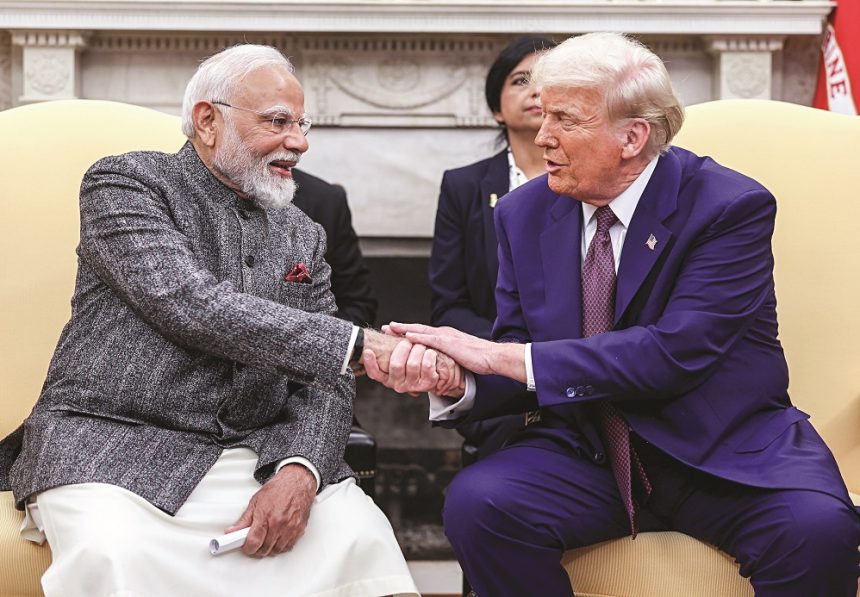
In a significant development in international trade relations, former U.S. President Donald Trump recently expressed optimism about a potential trade agreement with India. His statement, “I think we are going to reach a deal,” has ignited discussions across global business and diplomatic circles. As India continues to expand its global trade footprint, a deal with the United States — one of its largest trading partners — could carry significant economic and geopolitical implications.
The Backdrop of U.S.-India Trade Relations
The relationship between India and the United States has witnessed a dramatic transformation over the last two decades. From military cooperation to digital partnerships, the two democracies have cultivated a strategic alliance. However, trade relations have seen a fair share of ups and downs.
India is currently the ninth-largest trading partner of the United States, while the U.S. ranks as India’s largest trading partner, with bilateral trade exceeding $191 billion in 2023. Despite this strong trade volume, certain unresolved issues — such as tariffs, intellectual property rights, and market access — have created hurdles for a comprehensive trade agreement.
What Trump Said About the India Trade Deal
In a recent interview, Trump said, “India is a fantastic country with a great future. I think we are going to reach a deal, and it will be a good one.” This statement comes at a time when Trump is ramping up his campaign for the 2024 U.S. presidential elections and signals his intent to refocus on foreign trade as a key policy area.
Trump had earlier taken a tough stance on trade imbalances and had terminated India’s participation in the Generalized System of Preferences (GSP) — a program that allowed duty-free access to the U.S. market for certain Indian goods. The withdrawal affected over $6 billion worth of Indian exports. His latest remarks suggest a possible reversal or a fresh trade framework if he returns to power.
Why a U.S.-India Trade Deal Matters
A successful trade agreement between India and the U.S. would offer mutual benefits:
1. Market Access
American companies, particularly in agriculture, e-commerce, and technology, have long demanded easier access to Indian markets. A trade deal could help reduce existing barriers and open opportunities for both countries.
2. Tariff Reductions
One of the main points of contention has been the high tariffs imposed by India on U.S. goods. If a deal addresses tariff issues, it could lead to cheaper American products in India and boost consumer choice.
3. Strengthening Supply Chains
Amid the global trend of diversifying supply chains away from China, the U.S. sees India as a strategic alternative. A deal could encourage joint manufacturing initiatives, particularly in sectors like semiconductors, pharmaceuticals, and renewable energy.
4. Digital and Data Frameworks
With India becoming a global digital powerhouse, cooperation in data security, AI, cloud computing, and 5G can be structured through a formal agreement.
Challenges That Lie Ahead
While Trump’s optimism is noteworthy, several complex challenges must be addressed before a deal can be finalized:
- Agriculture and Dairy Disputes: India has resisted opening its dairy and agriculture sectors to U.S. exports, citing domestic sensitivities.
- E-commerce and Data Localization: U.S. tech giants have concerns about India’s strict data localization policies.
- IPR and Regulatory Barriers: U.S. pharmaceutical companies continue to lobby for stronger intellectual property protection in India.
India’s Strategic Interests
From India’s standpoint, entering into a new trade agreement with the U.S. aligns with its broader goals of becoming a $5 trillion economy and a manufacturing hub. Under Prime Minister Narendra Modi’s “Make in India” and “Atmanirbhar Bharat” initiatives, India aims to attract more foreign investment and reduce dependence on Chinese imports.
An agreement could also be a geopolitical signal — strengthening ties with a Western power at a time of rising tensions in the Indo-Pacific and increasing influence from China.
What’s Next?
Trump’s latest comments, whether strategic or sincere, show that the U.S.-India trade relationship is far from stagnant. Even though a formal deal was not finalized during his previous term, groundwork was laid that can be picked up either by him or his successor.
Both countries are likely to continue high-level discussions, especially as India’s economic clout grows and the U.S. seeks reliable trade partners. If successful, the trade deal could redefine U.S.-India relations for the next decade.
Conclusion
Donald Trump’s statement, “I think we are going to reach a deal,” has renewed optimism around a long-awaited U.S.-India trade agreement. While several challenges must still be resolved, the prospect of a deal holds enormous promise for both nations’ economies. For businesses, investors, and policymakers alike, this is a space to watch closely — as the future of global trade diplomacy may well be shaped by what unfolds next between Washington and New Delhi.
